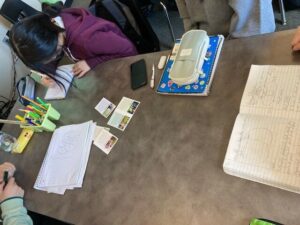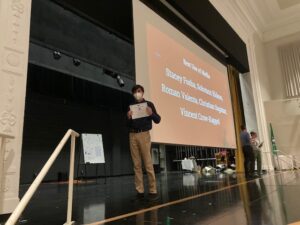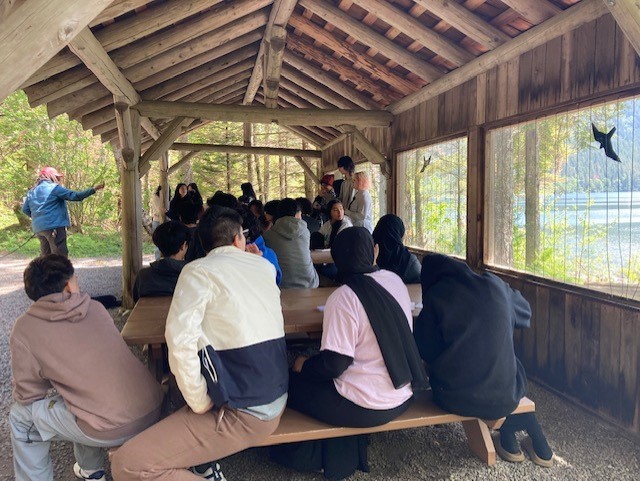To kick off the first unit of PEI’s Sustainability Course, Cleveland STEM High School teacher Ana-Claudia Magaña presented her students with a poser:
What is science?
If that question gets your brain going, it has a similar effect on high school sophomores. “I liked the inquiry-based process to get kids thinking and then tying it in with an exit ticket at the end,” says Magaña. “It was a good model.”
Magaña was a participant in PEI’s Sustainability Studies: Media Literacy and Science Communication workshop in May 2023, and one of four teachers who implemented all or some portion of the course with their students.
“I appreciated the land acknowledgment and the dedication to indigenous studies and indigenous science. It was interesting to see the contrast to Western science and to get perspectives outside of what we hear in the news.”
— Cleveland STEM High School teacher Ana-Claudia Magaña

The ten-unit middle and high school course developed by five PEI staff members focuses on refining students’ critical and creative thinking around the complexities of climate change, sustainability, and United Nations Sustainability Development Goals (SDGs). The course includes a media literacy component that ties science communication around the topic of climate change. The Sustainability Course leads students through a series of units designed to help them take a solutions-oriented approach to the issue and focus on how it manifests locally.
Every year, Magaña and her teaching team do a climate change project with the entire sophomore class of 200 students. Although she teaches humanities rather than science, Magaña coordinates with other teachers to integrate the topic across subject areas.
Later in the unit she asked them other questions. “Is all science the same? Why does society need to understand science? What natural resources are important to you and why?” Students’ answers changed as they studied Traditional Ecological Knowledge and learned about science communication.
She found the course’s focus on indigenous perspectives refreshing. “I appreciated the land acknowledgment and the dedication to indigenous studies and indigenous science,” she says. “It was interesting to see the contrast to Western science and to get perspectives outside of what we hear in the news. It’s nice for students to start thinking about the issues and looking at literature.”

Students were engaged in the process; however, as Magaña points out, that’s par for the course at Cleveland STEM School. “Our students are pretty on it,” she says. “Our pedagogy is centered on building positive relationships with students and making sure they feel welcome and safe when they come to school, which helps a lot with engagement.”
Field experiences, including a trip to Discovery Park as part of one unit, were a highlight. Students also gained communication and problem-solving skills by working on their final projects in small groups. “I think talking about climate change is a good starting point for them because it’s such a real thing that they’re witnessing and experiencing,” Magaña notes. “Learning how to coordinate teamwork has also been a nice takeaway for them.”
She plans to teach the course again in more depth in the coming school year. “I’m definitely planning to do the same units again,” Magaña maintains. “I want to do additional units that I didn’t have a chance to teach last year like the one on food security. That’s so relevant for our students.”
